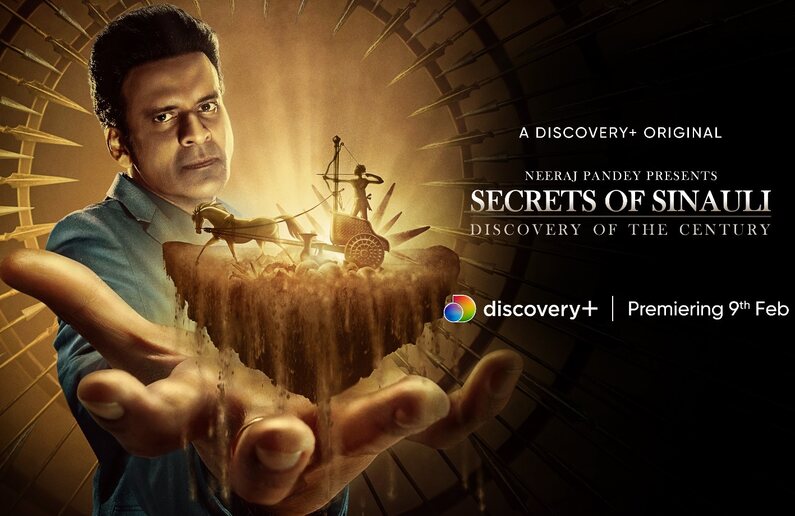The proverbial sleepy backwater of Sinauli in Baghpat district of Uttar Pradesh hit the headlines when an archaeological site was accidentally discovered when the farmers found a human skeleton and ancient pottery during levelling of agricultural land. This led to excavations by the Archaeological Survey of India in 2005, and again in 2018. The Sinauli findings threw a new light on the past, setting in motion reviewing and reinterpretation of earlier views and theories professed by Western historians and academicians.
Cut to the present. Bringing Sinauli, reported to be India’s largest necropolis of the Chalcolithic period (between 2000 BC and 700 BC), back into focus is the documentary Sinauli:Discovery of the Century being streamed by Discovery+.
The film in collaboration with ASI brings to viewers the unearthing of secrets buried for more than 4000 years through the findings that include three ancient chariots, copper weapons and warrior burials among other significant artefacts.
Encased in copper, the chariots are believed to be the oldest surviving physical evidence of the chariot ever to be discovered in the world. Also unearthed from the burial sites are shields, bows and arrows, spears, swords, helmets, axes and other copper weaponry. The documentary, through historians and experts in the field, reveals how these correct the wrong interpretation of the Indian history by Western historians.
Sinauli: The Discovery… also raises questions like why were the swords kept in burials? Who were the people connected to these swords and chariots? While focusing on several theories and questions about wars in ancient India, the feature using latest technology at Sinauli, will right the many misconceptions about India’s history.
The film is anchored by the popular cine actor Manoj Bajpayee; produced by Neeraj Pandey and Shital Bhatia, directed by Raghav Jairath.
Describing the opportunity to anchor the film as unique, Bajpayee, a history graduate, said, “it has been a learning experience for me. The documentary makes some historic revelations over the discoveries of the significant ancient chariots and different artefacts at the excavation that belong to a period of India that is very highly regarded.” He added that “History often gets interpreted in different ways through time, hence, important discoveries like that of Sinauli help us understand our past and our culture better.”
According to “A note on Chariot Burials found at Sinauli district Baghpat U.P.” by Vijay Kumar (published in Indian Journal of Archaeology), the 2018 excavations led by Dr. S.K. Manjul, ASI Director, “yielded chariots buried with dead bodies gave a new dimension to the associated culture and the old debate about the use of horse in India.”
The conclusion in the above note is an important pointer to the significance of the Sinauli findings, while bringing in a fresh perspective about the Ochre Coloured Pottery culture (OCP), a Bronze Age culture of the Indo-Gangetic plain, generally dated 2000-1500 BCE.
It states: “The chariots found at Sinauli belong to OCP culture. It belongs to late phase of OCP (around 2000 B.C.). The OCP people were using the copper hoard battle axes, harpoons and antennae swords. It appears that they were importing copper and finished copper objects from all over India. Some of the rock paintings of Chitrakoot reveal that the Vindhyan area, south of river Yamuna was invaded by copper hoard people. At that time, OCP people were using horses also for their war machinery. From these rock paintings, it is very clear that the OCP people were using these during the late phase of OCP. The find at Sinauli reinforces this conclusion because the chariots buried there are horse driven light chariots used in wars, sports and game. These chariots continued to be used by the local people as evident by Sanchi and Bharhut panels.”




















